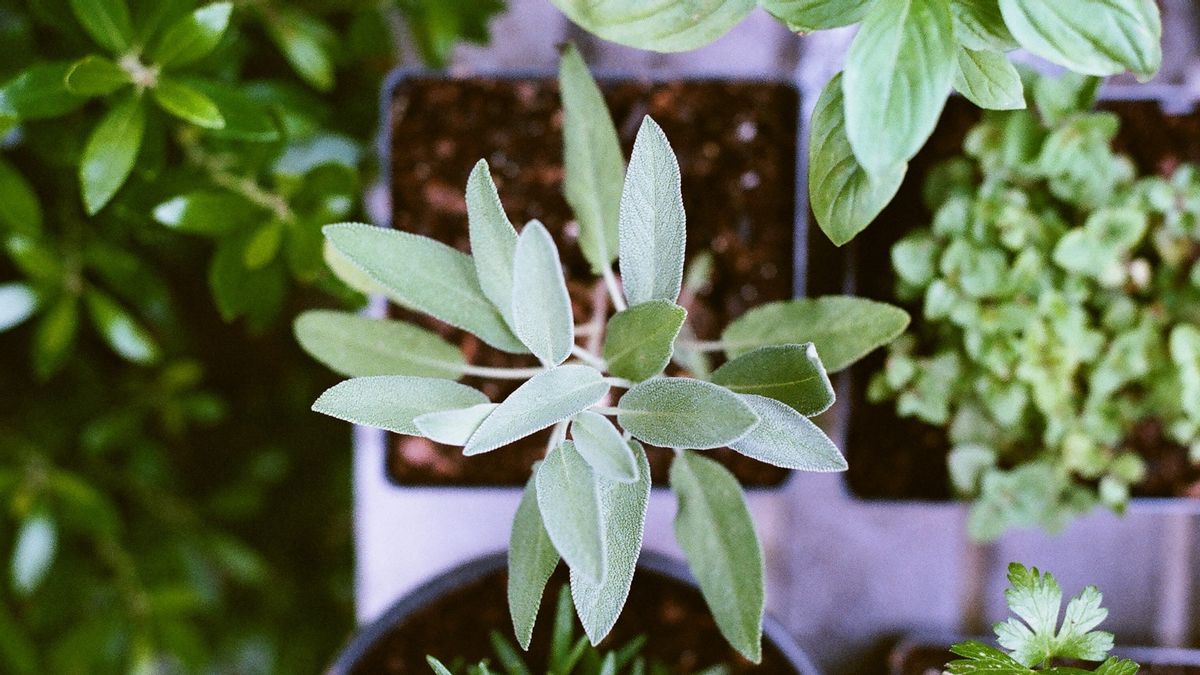JAKARTA – The sage herb has a distinctive aroma like pine. This leafy, carpet-like plant with a pale green color is scientifically named Salvia officinalis. If you often use other herbs such as oregano, rosemary, thyme, and basil, you must know one other family, sage.
The name Salvia comes from the Latin, salvus meaning 'healthy' or salvare meaning 'to heal'. It tastes a little bitter, but the benefits for health are many.
Quoted from a study published in the Journal of Traditional and Complementary Medicine, sage has long been used in traditional medicine in countries in Asia and the Middle East, especially in China and India.
In the study of Chemistry, Pharmacology, and Medicinal Property of Sage (Salvia) to Prevent and Cure Illnesses such as Obesity, Diabetes, Depression, Dementia, Lupus, Autism, Heart Disease, and Cancer, Salvia species in addition to being able to treat mild common ailments, also has the potential provides natural treatments to cure depression, dementia, obesity, diabetes, lupus, heart disease, and cancer.
Sage is, in fact, an easy plant to grow. In addition to liking caring for ornamental plants, there is nothing wrong if you complement it with herbal plants at home. Whether grown in the garden or indoors, here's how to grow sage plants.

In order to know what needs to be prepared, here are 5 steps to grow sage plants:
Sage plants like growing media that is dry and in full sun. That is, prepare a soil mixture that is not moist, such as adding sand. Planting sage can be from seeds or cuttings. If from seeds, prepare a pot that has been filled with soil. The soil must be left alone for 1-2 weeks. Then put the seeds and cover with 0.5 centimeters of soil. Flush the top with water and make sure the drainage is working properly. If planting from cuttings, plant the cuttings at a distance from each other. Water the soil and make sure it is at a temperature of at least 15 degrees Celsius. Roots will appear for approximately 6 weeks. Water regularly but don't let the soil get damp, because it can be at risk of mold growth.Reported by The Kitchn, Wednesday, December 8, growing sage is easiest from cuttings. If growing it from seed, it will be more difficult because it takes a longer time to grow shoots and always needs regular checks so that it is monitored in good condition.
How to Care for Sage PlantsSage plants can adapt to drought. In fact, this herbaceous plant does not like moist soil. Pests that often attack this plant include powdery mildew, stem rot, leaf fungus, whiteflies, aphids, and spider mites. To overcome this, it is necessary to check and eradicate or spray natural anti-pests.
Well, when harvesting, cut the small stems that are overgrown with leaves. When it has grown thick, propagate in separate pots. Giving organic fertilizer can be done every 2-3 months.
To give aroma to the dish, most delicious from fresh leaves. Although the aroma can still be preserved when using dried sage leaves stored in an airtight container and refrigerated.
The English, Chinese, Japanese, Arabic, and French versions are automatically generated by the AI. So there may still be inaccuracies in translating, please always see Indonesian as our main language. (system supported by DigitalSiber.id)













